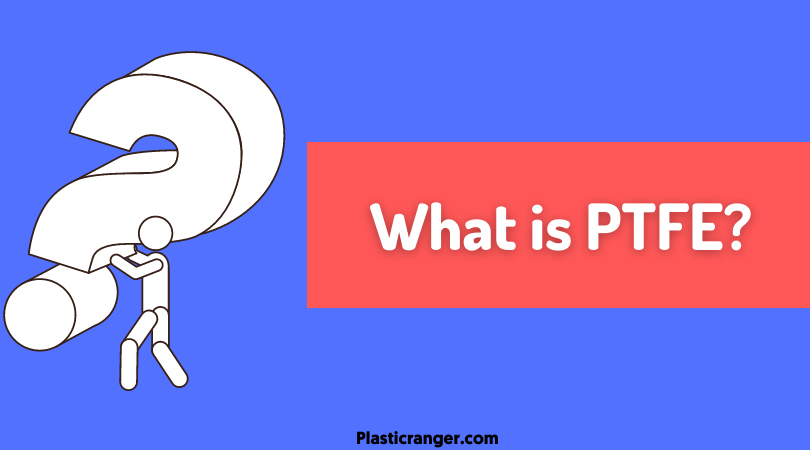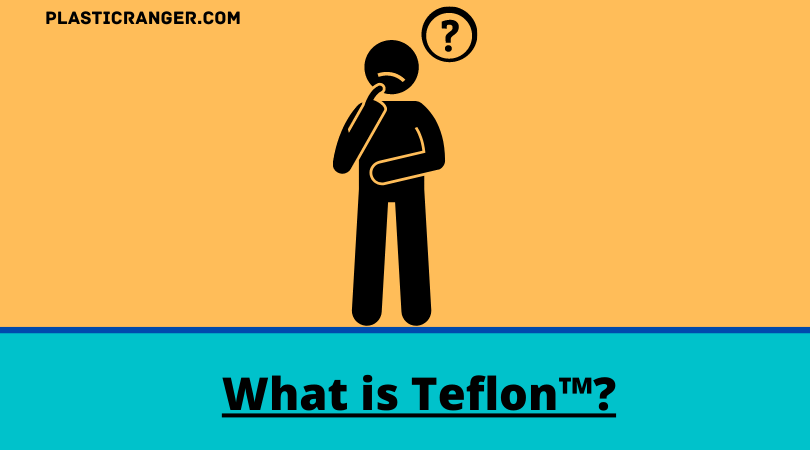Hello, people. After doing a lot of research, I have come across a fantastic guide on the differences between PTFE and Teflon. Somehow, they are both, and at the same time, they are not. Let’s get into the details.
PTFE VS Teflon: What Are the Differences?
PTFE is the actual chemical name for a material, and Teflon is the brand name for that same material. PTFE is known for being really stable in different conditions, like heat and electricity.
The world of plastics and polymers is full of jargon and acronyms, making it difficult to understand certain things. One such question that makes people scratch their heads is the difference between PTFE and Teflon™.
Essentially, the only difference is the name. PTFE is the abbreviation of polytetrafluoroethylene, and Teflon™ is the trade name of the same polymer.
What is PTFE?

To understand the difference between PTFE vs Teflon, we need to look closely at PTFE material. Polytetrafluoroethylene is a high-performance fluoropolymer made from two elements – carbon and fluorine.
PTFE is a linear polymer of tetrafluoroethylene (TFE) and is manufactured by the free radical polymerization process in an aqueous media with the addition polymerization of TFE in a batch process.
PTFE has many valuable properties, making it suitable for many applications.
The most common applications of nonstick coating in kitchen cookware are stain resistance in carpets and fabrics.
It is also extensively used in industries like oil & gas, chemical processing, electrical/electronics, construction, etc.
PTFE Properties
Below are some of the typical properties of PTFE:
- High flexibility
- Excellent anti-adhesion properties
- Outstanding resistance to heat and low temperature
- Good fatigue resistance under low stress
- Excellent chemical resistance
- Low dissipation factor
- Acceptable resistance is light, UV, and weathering
- Low water absorption
- Decent electrical insulating capabilities in wet environments
- Low coefficient of friction
| Property | Value |
| Tensile Modulus (MPa) | 550 |
| Elongation at Break (%) | 300-550 |
| Melting Temperature (°C) | 317-337 |
| Dielectric strength (kV/mm) | 19.7 |
| Surface Energy (Dynes/g) | 18 |
| Dynamic Coefficient of Friction | 0.04 |
| Appl. Temperature (°C) | 260 |
| Refractive Index | 1.35 |
Interesting Read – LDPE Vs HDPE: What are the Differences and Similarities
PTFE Applications
The specialty of Fluorinated thermoplastics is that they can be used in applications related to high heat, chemical inertness, high purity, low temperature, non-sticking, and self-lubricating properties.
The applications can be seen in automotive, chemical, medical, industrial, electrical, and electronics.
It is a high-performance substitute for materials like polyethylene, which has applications for low-end electrical components but is not suitable for high-end components; however, PTFE, thanks to its excellent dielectric properties and high melting temperature, is ideal for such applications.
| Industry | Applications |
| Automotive | Shaft seals, valve stem seals, fuel hose linings, O-rings, gaskets, power steering, transmission, etc. |
| Chemical Industry | Diaphragms, impellers, tanks, pumps, coating for heat exchangers, reaction vessels, autoclaves, containers, etc. |
| Medical Industry | Ligament replacements, heart patches, cardiovascular grafts, etc. |
| Industrial Applications | Bearings, non-stick surfaces, gears, slide plates, valves, pumps, fittings, seats, plugs, etc. |
| Electrical & Electronics Applications | Semiconductor parts, electrical insulation, flexible printed circuit boards, hook-up wires, and coaxial cables. |
What is Teflon™?

As said earlier, it is a trademarked version of Polytetrafluoroethylene. Teflon™ was discovered in 1938 by scientist Dr. Roy Plunkett when he was working on developing a new refrigerant. Later, it was created by Dupont Co. and administrated by Chemours in 1945, and it began selling products made from it in 1946.
The discovery of Teflon was an accident. Der. Rot Plunkett was trying to invent a new refrigerant when he noticed that TFE gs had flowed out of the bottle he was using, but there was no change in the bottle’s weight.
To find the reason, he looked into it and discovered that the bottle’s interior was coated with a waxy and stiffy material now known as Teflon.
PTFE VS Teflon: The Differences and Similarities
Simply put, there is no difference between them. So, the winner of PTFE vs. Teflon™ is nothing.
There is no reason to compare both; they’re both, in fact, the same thing. Regardless, we must cheer up the existence of such an incredibly versatile plastic material.
FAQs

Below are the frequently asked questions for Teflon vs PTFE. Let’s dig deep to know more.
What are the advantages and disadvantages of PTFE?
Advantages:
PTFE works excellently in dry and oil-free environments.
Very high lubricity and inert to most caustic fluids.
It’s an excellent electrical insulator, thus, used extensively in printed circuit boards and electrical cables.
Disadvantages:
It cannot be cemented.
The price of the polymer is high, which can be an issue for small and medium-sized businesses.
It cannot resist temperatures and melts at 320-350 °C.
Why is PTFE so expensive?
The polymer is considered expensive because of its high melting temperature – 320-350 °C. It’s way above the initial decomposition temperature of 200 °C. Even the molten form of the polymer doesn’t flow due to its extremely high viscosity.
Do face masks have PTFE in them?
PTFE is used in some masks, but the overall usage value is meager. Polypropylene is the most used material in medical face masks and N95 respirator masks.
Does Teflon contain carcinogens?
Yes, it contains a carcinogen called PFOA, which is why the polymer doesn’t have many applications in the food & beverage market.
Does silicone stick to Teflon?
Silicone is a challenging material to stick to surfaces. It always needs an additional treatment to stick to surfaces, and the same goes with Teflon. Thus it is used in non-stick coating applications.
Suggested Read
- Food Grade Plastic: The Best Plastics for Food Applications
- When Was Plastic Invented? | The History of Plastics
- How is Plastic made? A Simple and Detailed Explanation.
- Plexiglass Vs. Acrylic | What are the Differences and Similarities?
- UHMW Vs. Delrin: Which one is the Best?
- What is Hardness in Plastics? An In-Depth Guide
- What are the Top 5 High Tensile Strength Plastics?
- Which is the Best Acrylic Glue? | The Best Plexiglass Glue
Final Thoughts
That was my take on PTFE vs Teflon. In summary, although PTFE and Teflon are commonly used interchangeably, they are not identical.
PTFE denotes the chemical compound, while Teflon refers to PTFE products as a brand name.
Due to its excellent properties, PTFE has become famous for numerous applications, including medical devices, seals, gaskets, and non-stick cookware.
Even though Teflon is renowned as a frontrunner in non-stick cookware, consumers should be cautious of its possible health implications. Nevertheless, due to their exceptional traits, PTFE and Teflon are necessary materials in diverse industries.
Kindly share your thoughts on the post in the comment box.
Have a fantastic day.
Quick Navigation

